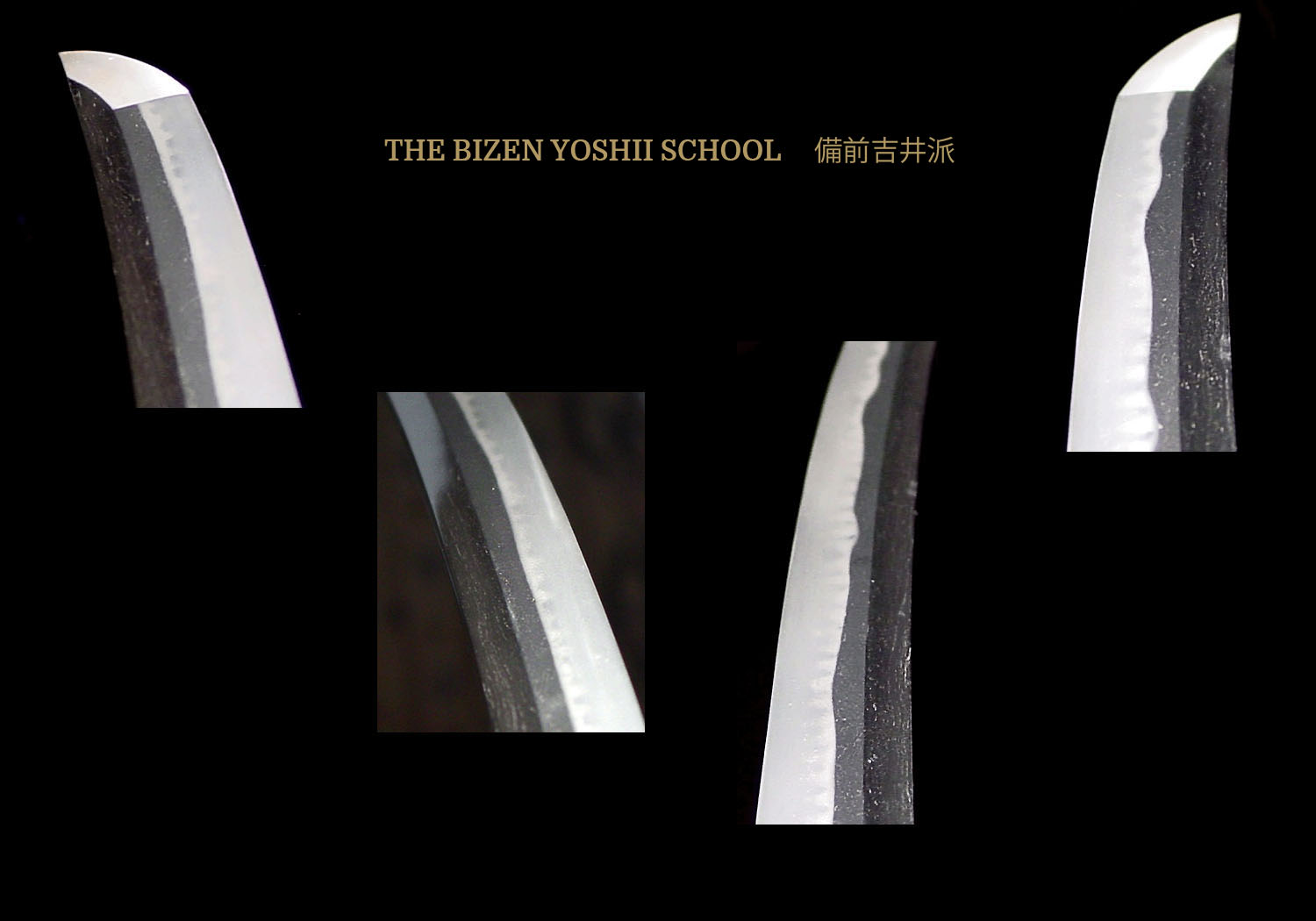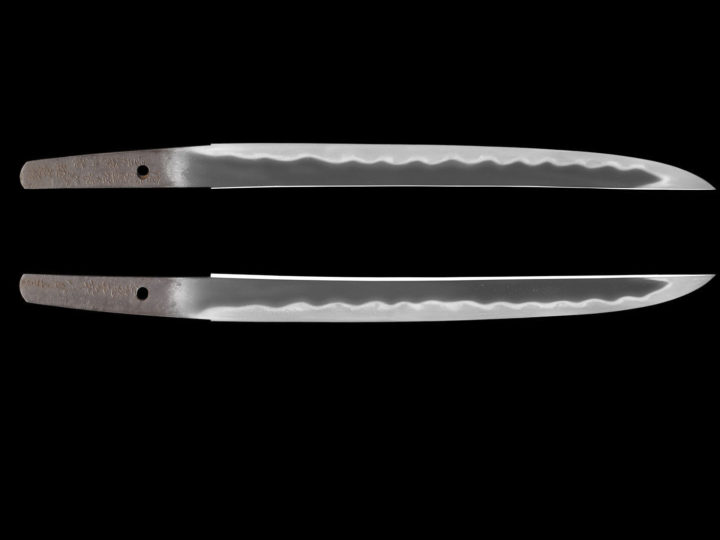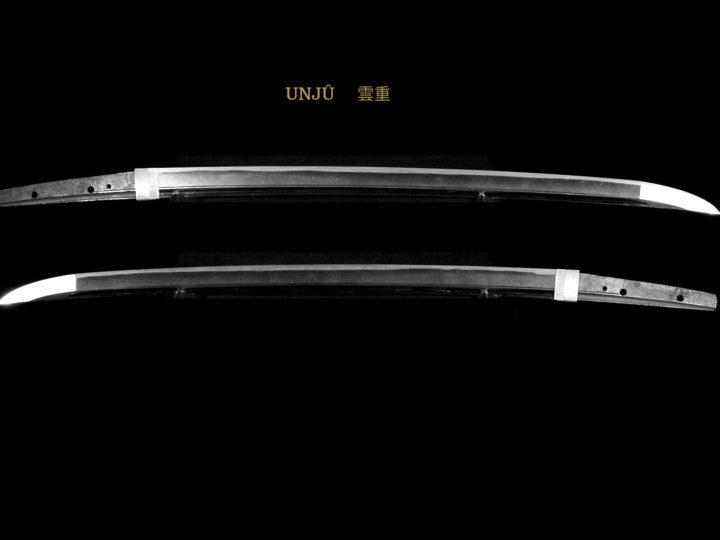
The Yoshii (吉井派)school was active in Yoshii, near Osafune, beginning in the Nanbokuchô period. Tamenori (為則) is said to have been the founder, followed by Kagenori (景則), Sanenori (真則), Ujinori (氏則), Yoshinori (吉則), Mitsunori, (光則), Morinori (盛則), Naganori, (永則) , Kanenori (兼則), and others. Later generations of smiths used the same names and those who moved to Izumo province are known as the Unshu Yoshii (雲州吉井)smiths. Most of the Yoshii (吉井)blades were produced during the Muromachi era. Their workmanship shows its own distinctive traits and is an unorthodox variation of the Bizen tradition.
The following are the general characteristics of the Bizen Yoshii Ha (備前吉井派):
SUGATA: The swords have neither o-kissaki nor wide mihaba, but a gentle sugata of standard length or just a bit shorter. Some of the earlier blades with still have a strong koshi-zori as was found in the Bizen tradition of the Nanbokucho era. The further into the Muromachi era the school moved, the gentler the sugata became. The school produced mainly katana and wakizashi, although hira-zukuri wakizashi are occasionally seen.
JITETSU: They carried over the Bizen tradition of a fine nie-lined itame mixed with mokume. The jitetsu will have a midare utsuri.
HAMON: The hamon is a key point in identifying this school. The hamon will be a regular and uniform continuation of ko-gunome throughout. The tani (bottom) of each gunome will have ko-nie present. There will be ashi, sunagashi and kinsuji present also.
BÔSHI: Most often the bôshi will contain a slightly undulating hamon with a ko-maru tip and a short kaeri. Often there will be hakikake present.
NAKAGO: Many of the katana of the Yoshii school have been shortened and lost their original nakago. Of those that remain ubu, the nakago is like the type of nakago that was common in the mainline Bizen Osafune school of the Nanbokucho era. They tend to be long with a kurijiri tip.
KANTEI POINTS: The jihada of a fine itame mixed with some mokume and the presence of utsuri should lead one to the Bizen school. The regular undulating gunome hamon with nie in the tani can take us only one place, the Bizen Yoshii school of the late Nanbokucho (ko-Yoshii) and the Muromachi era (Yoshii).






